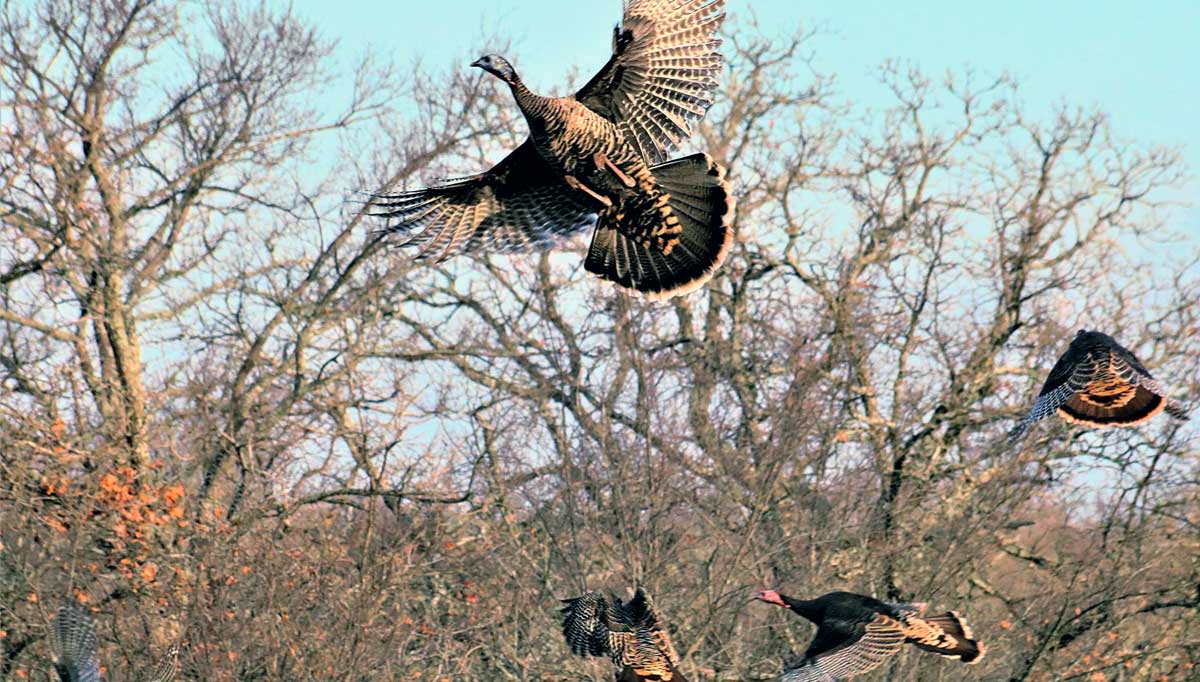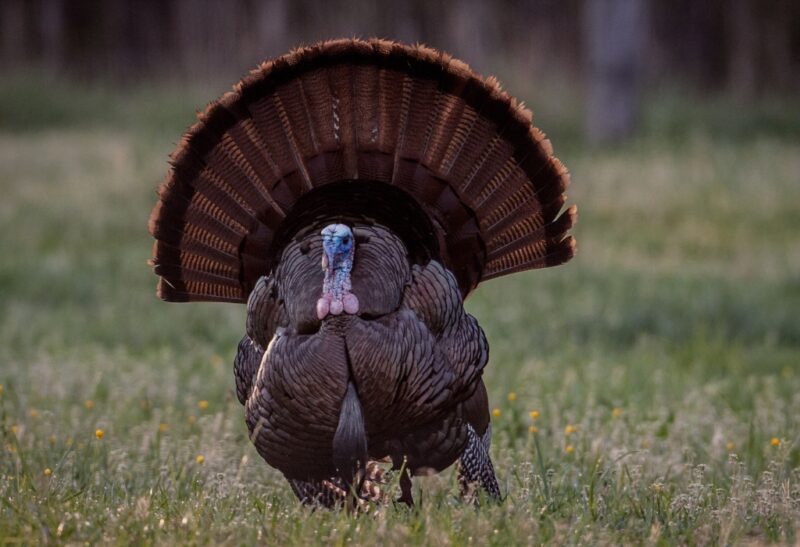Have you ever wondered why turkeys can't fly? Despite their wings and feathers, these birds are largely grounded, and there's a fascinating scientific explanation behind this phenomenon. Understanding the biology, evolution, and domestication of turkeys can help us unravel the mystery of their limited flight capabilities.
Turkeys, both wild and domesticated, have intrigued scientists and bird enthusiasts for years. While wild turkeys possess the ability to fly short distances, domesticated turkeys are entirely flightless. This article will delve into the reasons behind this characteristic, exploring the physical, genetic, and environmental factors that contribute to their inability to soar through the skies.
By the end of this article, you'll gain a deeper understanding of why turkeys can't fly and appreciate the intricacies of their physiology. Whether you're a wildlife enthusiast or simply curious about these iconic birds, this exploration promises to be both informative and engaging.
Read also:Michael Schoeffling 2024 Exploring The Career Achievements And Future Prospects
Table of Contents
- The Biology of Turkeys
- Domestication and Its Impact
- Wild Turkeys vs. Domesticated Turkeys
- Physical Characteristics Affecting Flight
- Genetic Factors in Flightlessness
- Environmental Influences
- Common Myths About Turkey Flight
- Evolutionary Perspective
- Scientific Studies and Findings
- Conclusion
The Biology of Turkeys
Turkeys, scientifically classified as Meleagris gallopavo, are native to North America. Their biology plays a crucial role in determining their flight capabilities. Unlike birds designed for sustained flight, turkeys have heavier bodies and shorter wings relative to their size. This anatomical structure limits their ability to achieve prolonged flight.
Additionally, turkeys have powerful leg muscles adapted for running rather than flying. This evolutionary adaptation allows them to evade predators on the ground more effectively than relying on flight. The combination of heavy bodies and strong legs makes turkeys well-suited for terrestrial life.
Adaptations for Ground Life
- Strong leg muscles for running and walking
- Short wings that provide limited lift
- Heavy body structure for stability on land
Domestication and Its Impact
Domestication has significantly influenced the flight capabilities of turkeys. Over centuries, humans have selectively bred turkeys for traits such as size and meat production, often disregarding their ability to fly. As a result, domesticated turkeys have become even heavier and less aerodynamic than their wild counterparts.
This process of selective breeding has led to the development of breeds like the Broad-Breasted White, which are entirely flightless due to their massive size and weight. Domesticated turkeys are bred primarily for agricultural purposes, making their inability to fly a byproduct of human intervention.
Selective Breeding
- Focus on size and meat production
- Reduced emphasis on flight capabilities
- Resulting in heavier, flightless breeds
Wild Turkeys vs. Domesticated Turkeys
While domesticated turkeys cannot fly, wild turkeys possess the ability to take short flights. These flights are typically used for escaping predators or roosting in trees. Wild turkeys are lighter and more agile than their domesticated relatives, allowing them to achieve brief bursts of flight.
Despite their ability to fly, wild turkeys are not built for sustained aerial travel. Their wings are designed for short, powerful bursts of speed rather than long-distance flight. This adaptation enables them to navigate their natural habitats effectively while conserving energy.
Read also:Residence Inn National Harbor Hotel Your Ultimate Staycation Destination
Key Differences
- Wild turkeys can fly short distances
- Domesticated turkeys are entirely flightless
- Physical differences due to breeding
Physical Characteristics Affecting Flight
The physical characteristics of turkeys play a pivotal role in their flight capabilities. Their body structure, wing size, and muscle distribution all contribute to their ability—or inability—to fly. Understanding these factors provides insight into why turkeys struggle with flight.
One of the primary reasons turkeys cannot fly is their heavy body weight. Domesticated turkeys, in particular, have been bred to be significantly larger than wild turkeys, making it nearly impossible for them to generate enough lift to become airborne.
Key Physical Traits
- Heavy body weight
- Short wings relative to body size
- Powerful leg muscles
Genetic Factors in Flightlessness
Genetics also plays a critical role in determining a turkey's ability to fly. Domesticated turkeys have undergone significant genetic changes due to selective breeding. These changes have resulted in traits that prioritize size and meat production over flight capabilities.
Research into turkey genetics has revealed that certain genes responsible for muscle development and body composition have been altered through breeding practices. These genetic modifications have led to the creation of flightless breeds that are better suited for agricultural purposes.
Genetic Modifications
- Genes influencing muscle development
- Changes in body composition
- Focus on traits beneficial for agriculture
Environmental Influences
The environment in which turkeys live also affects their flight capabilities. Domesticated turkeys are typically raised in controlled settings where flight is unnecessary for survival. This lack of environmental pressure has further contributed to their flightlessness.
On the other hand, wild turkeys inhabit environments where flight is occasionally necessary for survival. This natural selection process has allowed wild turkeys to retain their ability to fly short distances, even if it is not their primary mode of transportation.
Environmental Pressures
- Controlled environments for domesticated turkeys
- Natural habitats for wild turkeys
- Impact on flight capabilities
Common Myths About Turkey Flight
There are several myths surrounding the flight capabilities of turkeys. One common misconception is that turkeys cannot fly at all. While domesticated turkeys are indeed flightless, wild turkeys are capable of short flights. Another myth is that turkeys are too stupid to fly, which is untrue and overlooks the biological and environmental factors at play.
Dispelling these myths is essential for understanding the true nature of turkey flight. By examining the science behind their physiology and behavior, we can gain a more accurate perspective on why turkeys can't fly.
Debunking Myths
- Turkeys can fly short distances (wild turkeys)
- Flightlessness is not due to intelligence
- Biological and environmental factors are key
Evolutionary Perspective
From an evolutionary standpoint, the flightlessness of domesticated turkeys is a result of human intervention. Over time, turkeys have adapted to their environments, with wild turkeys retaining their ability to fly short distances and domesticated turkeys losing this capability entirely.
This evolutionary divergence highlights the impact of selective breeding on animal physiology. While wild turkeys have evolved to balance flight and ground-based survival strategies, domesticated turkeys have been bred to prioritize traits unrelated to flight.
Evolutionary Adaptations
- Wild turkeys retain limited flight ability
- Domesticated turkeys lose flight capability
- Impact of human intervention
Scientific Studies and Findings
Scientific studies have provided valuable insights into the flight capabilities of turkeys. Researchers have examined the anatomy, genetics, and behavior of both wild and domesticated turkeys to understand why they can or cannot fly. These studies emphasize the importance of considering multiple factors when analyzing animal physiology.
One study published in the Journal of Avian Biology found that wild turkeys use their wings primarily for short bursts of flight to escape predators. Another study highlighted the genetic differences between wild and domesticated turkeys, shedding light on the role of selective breeding in flightlessness.
Key Findings
- Wild turkeys use flight for predator evasion
- Genetic differences between wild and domesticated turkeys
- Impact of selective breeding on physiology
Conclusion
In conclusion, the question of why turkeys can't fly is multifaceted and involves a combination of biological, genetic, and environmental factors. Domesticated turkeys, in particular, have been bred for traits unrelated to flight, resulting in their complete inability to take to the skies. Meanwhile, wild turkeys retain limited flight capabilities, demonstrating the adaptability of these fascinating birds.
We encourage readers to share their thoughts and insights in the comments section below. Additionally, feel free to explore other articles on our site to learn more about wildlife, animal behavior, and the science behind nature's wonders. Understanding the world around us enriches our appreciation for the intricate web of life that connects us all.


